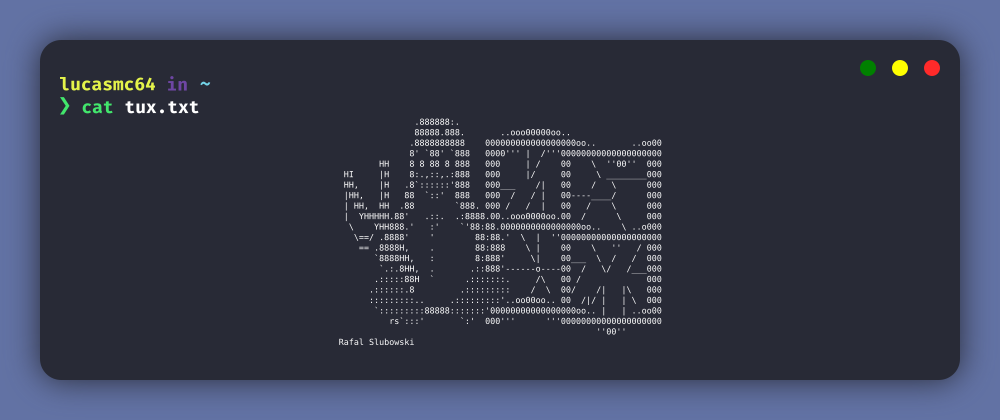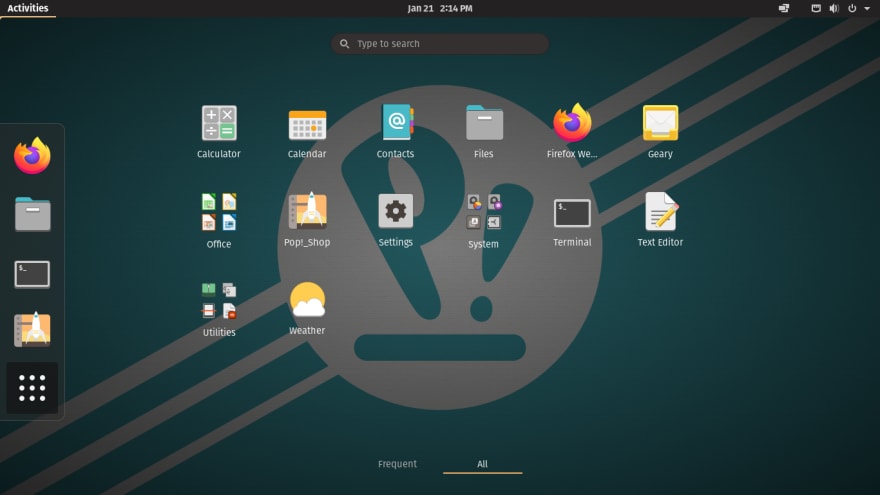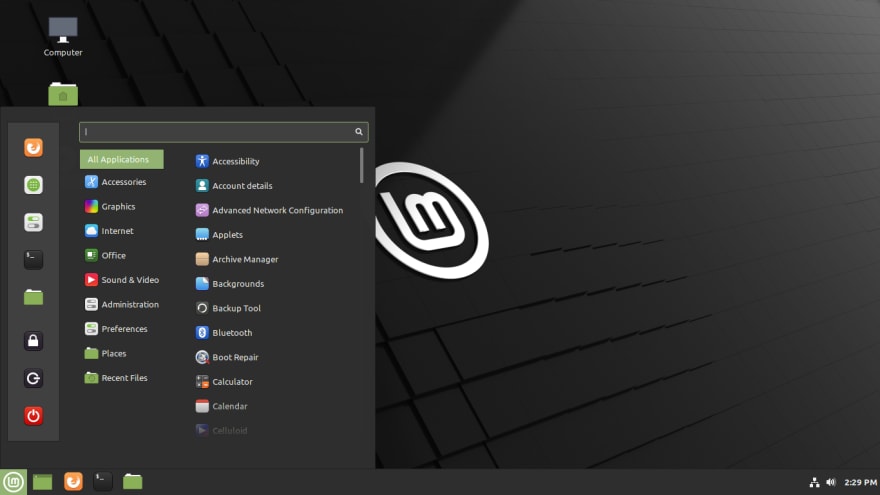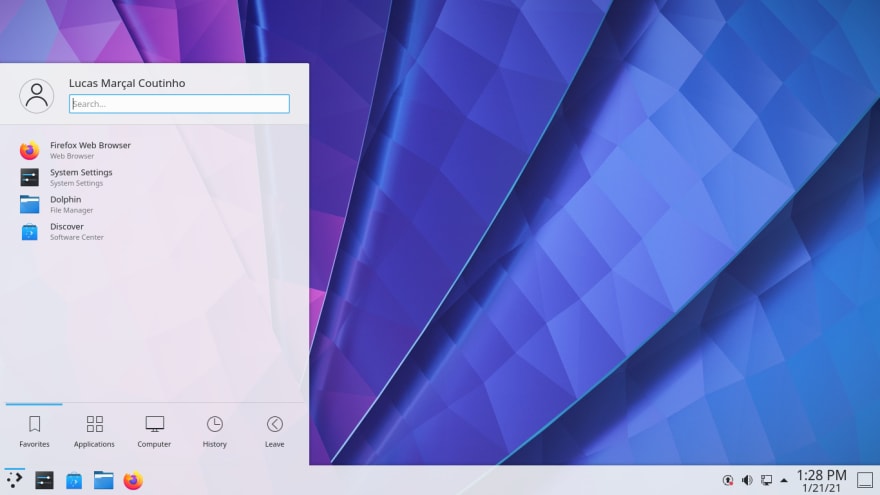🇧🇷 Caso prefira ler em outra língua, esse artigo também foi publicado em português. Clique AQUI para acessar!
Introduction
If you opened this article, you are at least curious about the world of the Penguin. Be careful: you are being attracted to the more open-source, private and customizable side of the Force.
Some people may feel comfortable in Windows and never even consider an alternative to it, many do not even know that there are options to the Microsoft system, while others fear that Linux world is just a "black screen" (terminal).
This is the first in a series of articles in which I will try to resolve some of your doubts about the Linux world and show you that this subject is only a 7-headed monster if you want it to be :)
After all, what is Linux?
At first, this question may seem trivial and something similar may come to your mind: “Linux is a operating system, like Windows and MacOS, but free”. But that's not quite it...
The Operating System (OS) is the name given to the program or set of programs that manages computer resources, as a bridge with a graphical interface between hardware and the user.
Linux, in fact, is not an operating system, but it is the kernel (core) present in several OSs.
The kernel, in general, is the heart of the operating system: the part that makes the connection between applications and hardware, that is, who allocates and manages the machine's resources so that programs can run.
Another important point is that not all Linux-based software is necessarily free because, as it is an open-source project, its license allows third parties to sell a proprietary version of the kernel or even charge for distributions based on it. Some examples would be Red Hat Enterprise Linux, Zorin OS Pro and the SUSE Linux Enterprise product line.
Open-source software is created under a license that allows the public to study, modify and distribute their code as they see fit. Some restrictions may apply depending on the license.
GNU without Linux, that's me without you
The kernel is, in fact, a very important part of the composition of any operating system, however this puzzle has many more pieces, as the kernel needs a whole environment and tools that make it possible to manage the machine.
The GNU project, on the other hand, had a lot of tools, utilities and components necessary for the composition of an OS, but guess what, just one piece was missing: the kernel.
GNU is a recursive acronym for GNU is Not Unix and, my dears, there are wonderful references at the end of the article if you like history or are just curious about the project!
Yes, ladies and gentlemen, what we now commonly call just Linux is the combination of the entire system created by the GNU project and the kernel project created by Linus Torvalds, whose correct name for, what is now really an operating system, is GNU/Linux.
Distros
Distro is nothing more than an abbreviation for distribution, a term used to generically refer to a GNU/Linux based operating system.
In the previous section, it was mentioned that the combination of applications and tools from the GNU project and the Linux kernel (GNU/Linux) is an operating system, however, there is not, in fact, an OS called "GNU/Linux" to download and install it on your computer... and that's where distros come in.
There are several distros, each aimed at its audience or a specific purpose. Therefore, despite generally having the same base, linux distributions can be very different from each other, ranging from a modified kernel and proprietary programs to different graphical interfaces.
The graphical interface, also called the GUI, or Graphical User Interface, of the OS, is the part of the distro that manages the way things are presented visually to the user.
Note that GUI is an extremely generic term and is being used to refer to the graphical part of the OS, which the user can see and interact with, which does not include text-based and command-line interfaces.
Graphical interfaces / Desktop Environments
It's possible that instead of coming across graphical interface, you'll find a slightly different definition: Desktop Environment or simply DE. While, formally, the first term refers, in this article, to how an OS presents itself graphically to a user, the second refers not only to the interface, but to a whole set of tools that the project responsible for it created to the same.
What good would an interface be without a settings program or a file explorer? Yes, these programs are part of DE, an environment developed to support the interface and complement the user experience, in addition to generating a visually cohesive system.
Now, unlike Windows and MacOS, which only have their default "look", there are several graphical interfaces in the Linux world.
Of course, even though Windows and macOS only have a single interface, there are ways (official and unofficial) to customize them. However, in the Linux world, it is possible to simply install a new interface and delete the old one.
Some DEs have interfaces that are more user-friendly, intuitive, and even have Windows similarities to ease the user transition (like Cinnamon and KDE Plasma).
Others, on the other hand, may have a very different usability than what you're used to, but still provide a more minimalist and, who knows, productive experience (like Gnome).
In general, other DEs can also be installed via the terminal and, when logging in, you choose which interface you want to use.
Gnome
Gnome is a project that places special emphasis on usability and, even though it may seem strange to you at first glance, it has an intuitive and easy-to-adapt interface.
Maybe you've heard about one of the most famous Linux distros, Ubuntu. It uses Gnome and is a system recommended by many people precisely because it is easy to learn to use, has a solid foundation and constant updates.
There are several other distros that use Gnome - Manjaro, Debian, Fedora, GnomeOS - each with its own unique features.
GnomeOS is a distro created by the Gnome project itself for developer testing purposes. This distribution is not considered stable enough for everyday use so please do not install it on your main computer.
Cinnamon
Cinnamon is a Gnome-derived project, being developed by the Linux Mint team. For Windows users, it has a much more friendly and familiar interface, which is precisely its intention: to be a gateway for those who want to migrate from Microsoft's operating system to the Linux world.
Undoubtedly, the Linux Mint distribution is another great recommendation, with an extremely intuitive interface and, as it is an OS based on Ubuntu, a frequently updated program repository.
There are other distros that use Cinnamon besides Linux Mint, such as Debian and Fedora, with their differences, of course.
It is worth mentioning that linux distributions can release different versions of themselves but with a different interface.
The Linux Mint team, for example, despite having created CInnamon, also makes available versions of its operating system with DEs Mate and Xfce.
KDE Plasma
KDE Plasma is developed by the KDE team with a focus on usability and, mainly, customization. With advanced customization options available by default, distributions with KDE Plasma are a great option for anyone who wants to modify their system to the fullest.
KDE Neon is the official distro that the project maintains to test new DE features, but some other distros also adopt a more stable version of Plasma to make it available for the user, such as Manjaro, Fedora and Kubuntu.
Today, there are two versions of KDE Neon, one that you can actually use on your personal computer and the other one to be used as testing by developers.
Others DEs and interfaces
There are other DEs and interfaces like DDE, XFCE, LXDE, LXQT, Mate and UKUI.
I recommend you do your research, take a look at the channels Diolinux and The Linux Experiment to see how the interfaces work and which ones you like best.
Perfection is individual
The perfect OS does not exist, but everyone is constantly updating to always be the best version of themselves. However, the perfect system for you would be one that meets all your needs.
There's no such thing as a perfect interface, but rather the one you feel comfortable to use, where you're the most productive or just the one you think is the most beautiful.
I recommend that you test, experiment and learn more about it. Most distros do not charge you anything for using them and none limit your access to the system so... why not give it a try?
Pros and cons
Nothing is perfect, unfortunately neither is the Linux world. So, here are some pros and cons of using Linux distros over Windows.
| Pros | Cons |
|---|---|
| Linux distros are faster than Windows | Linux has few NATIVE games |
| Linux distros are more secure than Windows | There are programs for Windows that do not exist in the Linux world |
| Linux is open-source and most distros are free | |
| Multiple choice of interfaces | |
| It is extremely customizable | |
| Full system access |
Research, first of all, if the programs and resources you need are available in the distribution you are considering using.
Choosing your distro
I recommend that you watch the videos Qual a melhor distro para “——” and Como escolher a melhor distro para o seu uso?. The first is basically a re-recording of the second, but both complement each other and will show you some other important points for choosing the distro.
Taking into account some points, I separated some recommendations of distros for questions:
Beauty
Deepin and Ubuntu Kylin are by far the most beautiful distros for me. But there is a catch: both are Chinese distros and there is no guarantee that you will find any material (forum, documentation, videos…) in English or in your native language for you to consult in case there is a problem. Another important point is that there may be some parts of the system that are not translated.
Despite being present in the distribution name, Ubuntu Kylin just uses Ubuntu as a base, having no relationship with Canonical (maintainer of Ubuntu) .
Another very beautiful distro is eXternOS, but it is still in beta until the posting of this article. One option would be to use a distro with KDE Plasma and modify it as you wish, there are several tutorials on the internet and the results are incredibly beautiful.
Today, I also find Gnome 40 (or higher) quite charming, being my favorite DE and the one I've been using by default since well before the redesign in the version 40 interface ❤️!
Games
This is a wound that anyone who doesn't like the Linux world loves to hammer. As I said before, Linux doesn't have many native games like Windows does… But there's nothing stopping you from trying to run games made for Windows on Linux.
This magic of being able to run programs made for Windows on Linux is thanks to WINE and Proton.
Not all software supports these technologies, and even if they do, there may be some issues. Find out more about the subject, if it interests you, search specifically for the applications you need.
Pop!_OS is one of the best distros to play today, already coming with Nvidia drivers (if choosing this option on the website) and for having a frequently updated program repository.
I recommend you to watch these two videos: Configurando o Pop!_OS para jogos and Como jogar no Linux em 2020. They will give you a sense of how things work and give you tips on where to look to see if your favorite games are supported on Linux.
With the advent of Steam Deck, some distributions like Fedora have announced investments to improve gaming experience and hardware compatibility.
Development
Here we already need the latest software, constant updates and a large arsenal of programs. Ubuntu has long been the darling and the best distro to develop in the Linux world because it is popular, stable and easy to use.
However, over time, other distros have also acquired and reinforced these characteristics, with some having more appeal to the developer audience like Pop!_OS, Fedora and Manjaro.
Stability (one distro to rule them all)
In general, distros like Ubuntu, Linux Mint and Pop!_OS try to deliver a balance between stability and new features. However, there is an operating system that is known to focus on stability: Debian.
Debian is an operating system primarily composed of free software and maintained by the community. Its release cycle for new versions is considerably longer than traditional distros, focusing precisely on a stable system and long-term support.
This distribution may not have the programs or DEs in their latest versions, as their updates are only made available after many tests, to try as much as possible to ensure that nothing causes problems for your user.
It's called freedom, right?
You don't have to be indecisive among so many choices, it's open-source! If you want, just format and install another distro or another DE. You are free to install, reinstall and modify as you wish.
I hope I have clarified some of your doubts. I know I haven't addressed every possible subject, but other articles will come to complement this one :)
Feedback!
This article was initially written in Portuguese, so if you find any inconsistencies in the text, please let me know!
Feel free to say what you think of this article, ask questions, point out a topic that was not very well explained or that needed to be talked about, suggest other topics and complement what has already been said. To the next!
References and recommendations
🇺🇸 Graphical user interface - Wikipedia
🇧🇷 Curso de Linux - Curso em Vídeo
🇧🇷 Open Source (Código Aberto): veja como funciona - TOTVS
🇺🇸 Why everyone should try using Linux - opensource.com
🇺🇸 Linux Jargon Buster: What is Desktop Environment in Linux? - It's FOSS






















